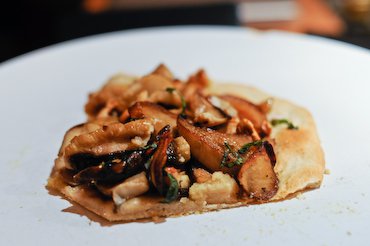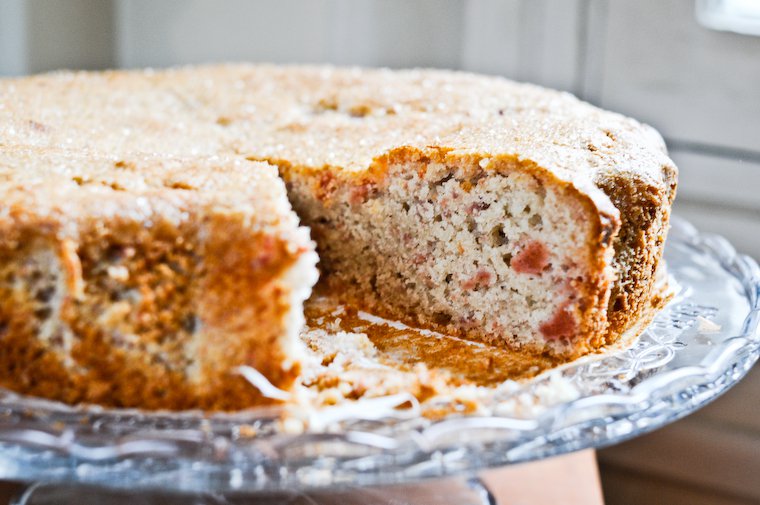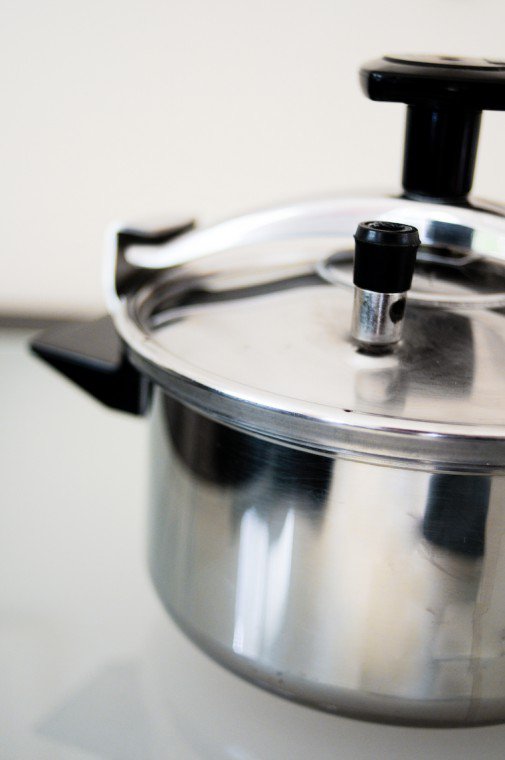I haven’t made much jam lately. I was very excited about the process when I was just learning about it some years ago, but I soon realized it was hardly a thrifty pursuit in my case: because I live in the city, I have no need to preserve a hypothetical glut from a garden or orchard, and the price of fresh organic fruit is such that I only buy what we’ll consume in season.
I have occasionally helped my mother prepare batches of jam while on vacation at my parent’s mountain house in the summer, when it is possible to strike good deals on crates of berries or apricots at the greenmarket. Aside from that, my jam-making ambitions have been placed on the back burner.
But then I received a big gift of quinces a few weeks ago, and in addition to the poaching and the cake baking, I was inspired to make quince jelly, one of the most classic uses of the pectin-rich fruit.
In a few months, when the jelly has had time to age a bit, we’ll pop a jar open and spread some on our morning slices of pain au levain, with or without a thin insulation layer of semi-salted butter.
I turned to jam guru Christine Ferber for guidance, and followed the recipe that’s in her comprehensive book Mes Confitures.
Making quince jelly is a two-step endeavor: first, you cook chunks of whole quinces (good news! no need to peel or core them!) in water until soft. You then filter the juice they’ve produced and, after giving it a good night’s rest, you boil it with sugar and lemon juice (the acidity makes it possible for the pectin to gel*) until the jelly is concentrated enough to set.
The amount of sugar you add in the second step depends on the volume of quince juice you get out of the first, and the different recipes I’ve looked at instruct you to add anywhere between 600 grams and 1 kilogram (3 to 5 cups) sugar for each liter (or quart) of juice.
Contrary to what one might intuitively think, this has no effect on how sweet the resulting jelly is: jelly sets on the condition that it’s been brought to a target temperature of 103-105°C (or 217-221°F; at sea level), at which point the sugar concentration is 65%**. If you’ve added less sugar in the first place, your jelly will simply take more time to reach that concentration, because there will be more liquids to boil off, and you’ll end up with a lesser quantity of jelly.
Some like to flavor quince jelly with vanilla, cardamom, cinnamon, or other warm spices, and I have no ideological objection to it, but I consulted with Maxence and we agreed we’d rather just enjoy the pure taste of quinces on our toast.
Because this is, naturally, the primary use we intend for the ruby lightbulbs of jelly my efforts yielded: in a few months, when it’s had time to age a bit, we’ll pop a jar open and spread some on our morning slices of pain au levain, with or without a thin insulation layer of semi-salted butter. I’m sure it will fare well on the tender flesh of a split yogurt scone, too, and I look forward to brushing the top of my apple tarts with it for shine, as is traditional.
~~~
* As Harold McGee explains on page 297 of his On Food and Cooking, the addition of lemon juice “increases the acidity, wich neutralizes the electrical charge and allows the aloof pectin chains to bond to each other into a gel.” (Don’t you love to imagine those pectin chains acting all aloof and superior?)
** “When we dissolve sugar or salt in water, the boiling point of the solution becomes higher than the boiling point of pure water. This increase in the boiling point depends predictably on the amount of material dissolved: the more dissolved molecules in the water, the higher the boiling point. So the boiling point of a solution is an indicator of the concentration of the dissolved material.” Ibid., pp. 680-681.








